A summer in Chamonix
Tips and routes to spend your dream holiday in the Mont Blanc massif
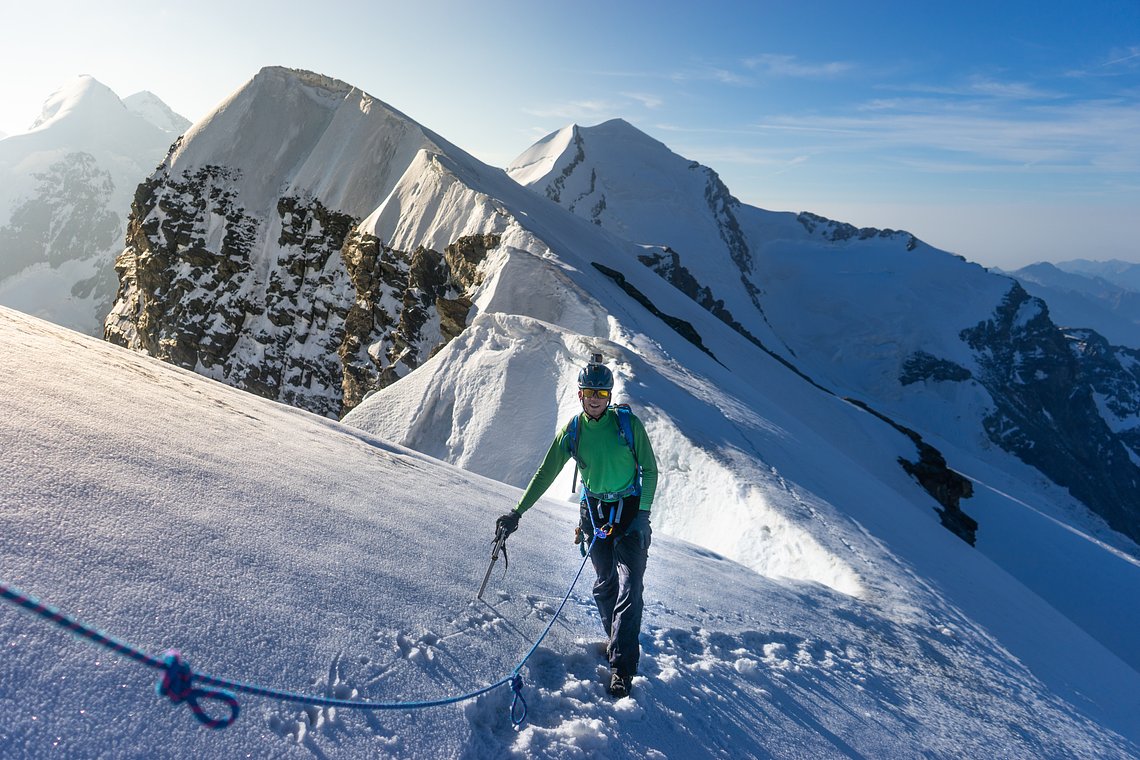
 by Xavi Coll
·
Tue 17 Oct 2023
by Xavi Coll
·
Tue 17 Oct 2023
Chamonix, often known as the mountaineering capital, is where climbers from around the globe converge to fulfill their alpine dreams each summer. This picturesque region is host to many classic climbing routes and dream treks among towering granite giants like Mont Blanc, Grandes Jorasses, Aiguille Verte, and Grand Capucin, which bask in the spotlight every season.
To grasp the significance of Chamonix and the Mont Blanc massif, you just need to observe the multitude of nationalities traversing the city's streets, the glaciers, and surrounding peaks. Mont Blanc, one of Europe's most desired mountains, beckons mountaineers with its relatively straightforward normal route via Goûter. In just three days, weather permitting, climbers can reach the summit of the highest peak in the Alps, standing at 4,810 meters above sea level. Every year, between June and September, hundreds of climbers climb this mountain. On exceptional high-pressure days, paraglider pilots may even soar over Mont Blanc, touching down at its summit before continuing their cross-country flights or descending to Chamonix.
This article aims to provide insights into some of these mega-classic climbing routes and ascents, equipping you with the information to inspire and prepare for your next summer adventure.
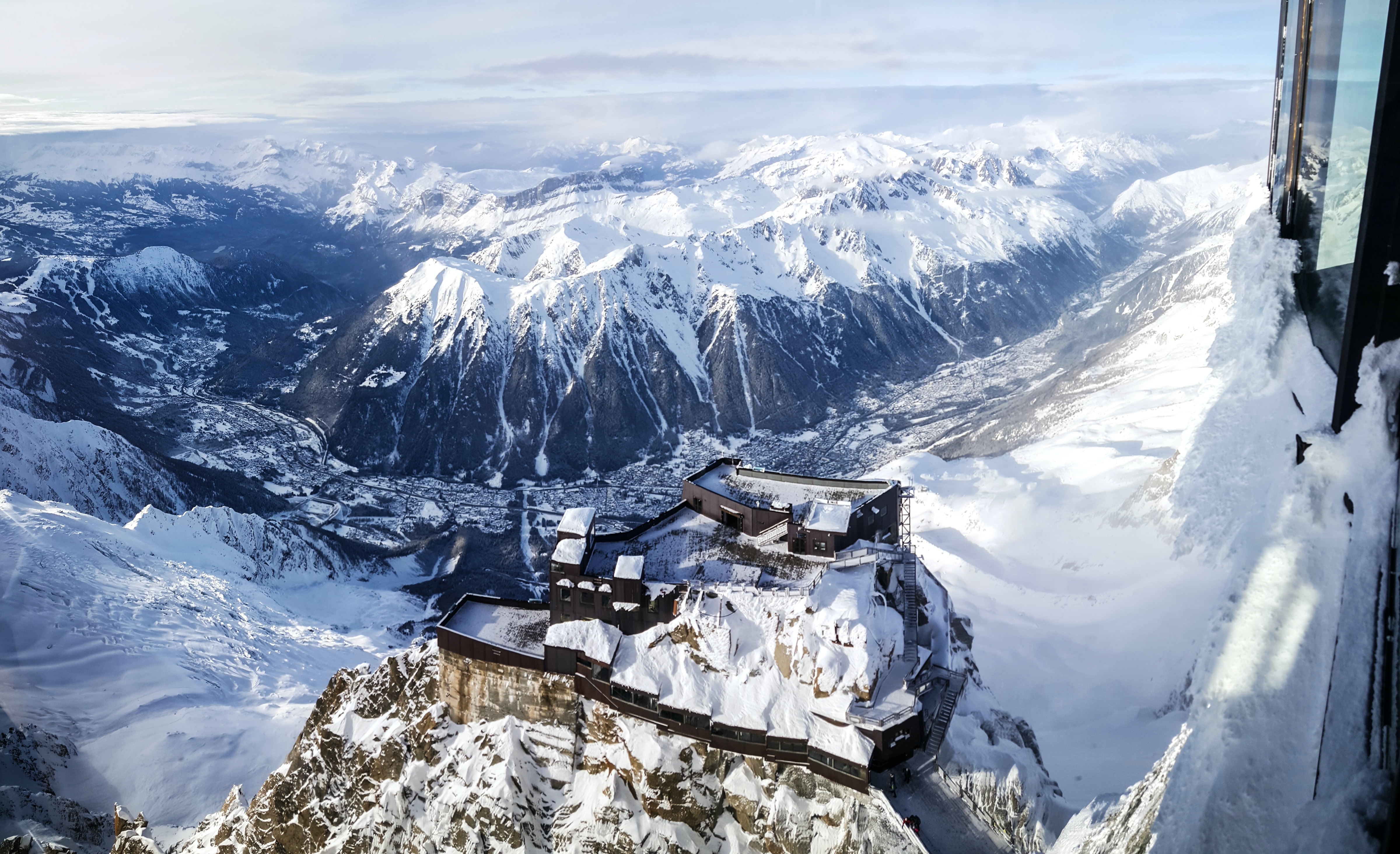
Gran Capucin (Swiss Route, 300m ED-, 7b max - V+ obl.)
The Swiss Route presents a stunning and consistently demanding ascent, despite a relatively easy initial section. The climb takes you through a labyrinth of distinctive rock formations, predominantly featuring cracks. While protection is reliable, it should not be underestimated, as it is longer and more serious than it appears, often shared with numerous other climbing teams.
Description:
- Pitch 1 (5c, 25m): Ascend the slab via two parallel cracks, arriving at a spacious belay ledge located just below the distinctive corner system that defines the upcoming pitches.
- Pitch 2 (6a+, 30m): Instead of proceeding through the deep chimney on the right, step to the left and ascend the exceptional crack on the wall.
- Pitch 3 (5b, 35m): Climb the corner to the left, reaching a belay point.
- Pitch 4 (5b, 35m): Continue upwards in the corner and belay once it widens.
- Pitch 5 (6a, 40m): Tackle the steep cracks just to the left of the ridge crest before returning to a belay on your right.
- Pitch 6 (6a+, 20m): Conquer the challenging, slippery hand-crack to the right of the crest before moving back to the left towards a belay spot.
- Pitch 7 (6b+/A0 or 7a, 30m): Begin by stepping up to the square-cut roof and undercut rightwards to access the roof crack. Ascend using aid pegs (A0) until the terrain becomes easier, marking the point where 6b+ free climbing resumes. Arrive at a small ledge beneath a slab offering a spectacular view and an incredible atmosphere. If you aim to climb the pitch without aid, there's another crack to the right of the aid crack, which can be climbed to approximately 7b.
- Pitch 8 (6a+, 35m): Climb the slab, passing a couple of bolts along the way, until you reach a section with a gentler incline.
- Pitch 9 (4a, 40m): This portion is often covered in snow, so your precise line matters less than avoiding the snow. Ascend the slabs and cracks to the base of the final summit tower.
- Pitch 10 (4a, 35m): Continue upwards through the slabs and cracks, ultimately reaching the magnificent summit.
Descent:
For the descent, we chose to rappel down L'Echo des Alpages. This path is a direct route with fewer crowds, yet it comes with exposure. Be cautious, as dislodging your rope might lead to navigating some particularly challenging terrain.
Starting Point:
Opting for Flagrant de Lire as the starting point is a scenic choice, although the rock quality can be a bit loose, and protection might not be perfect. Notably, it's not yet a popular option, despite the presence of newly bolted anchors.
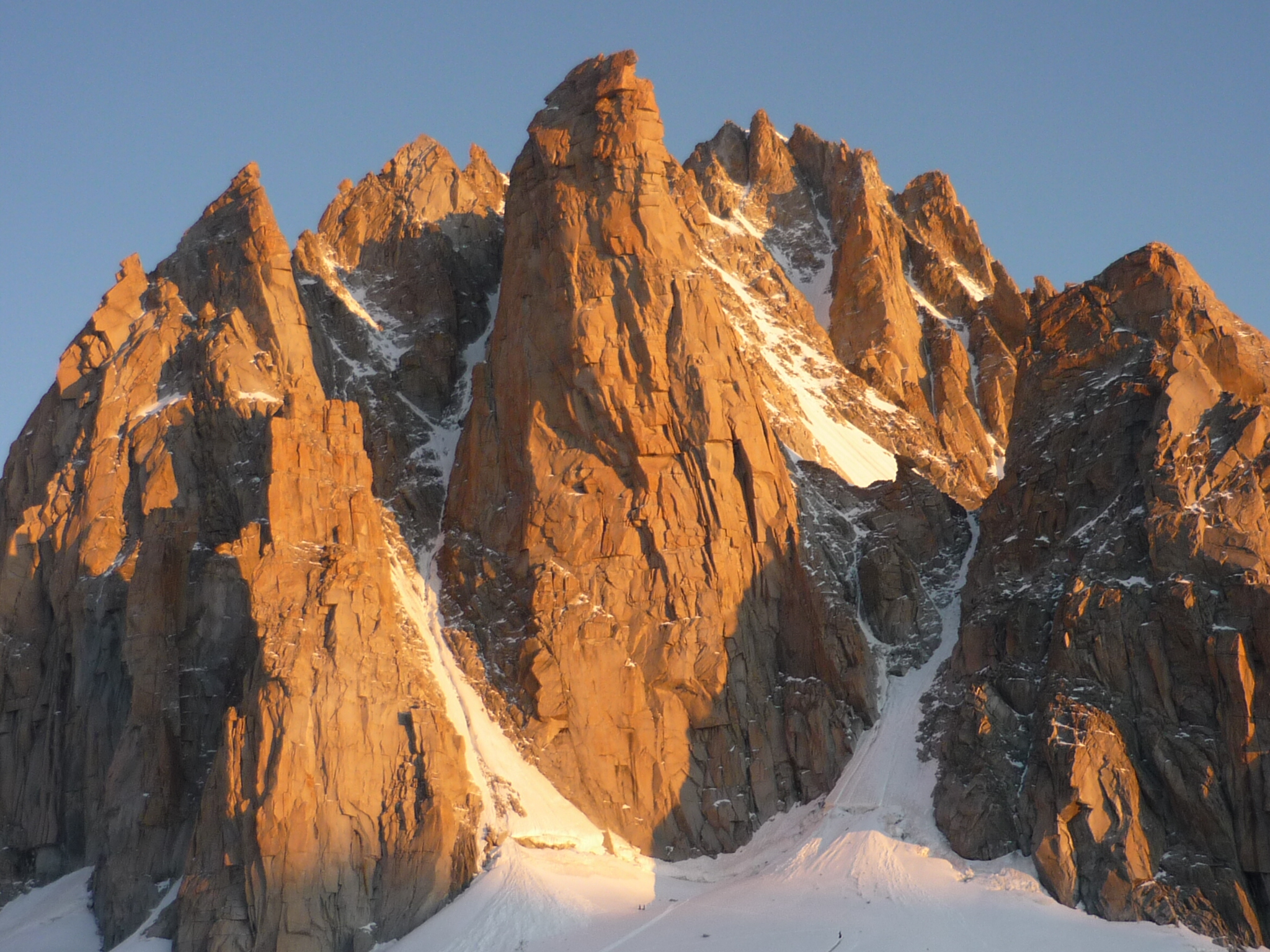
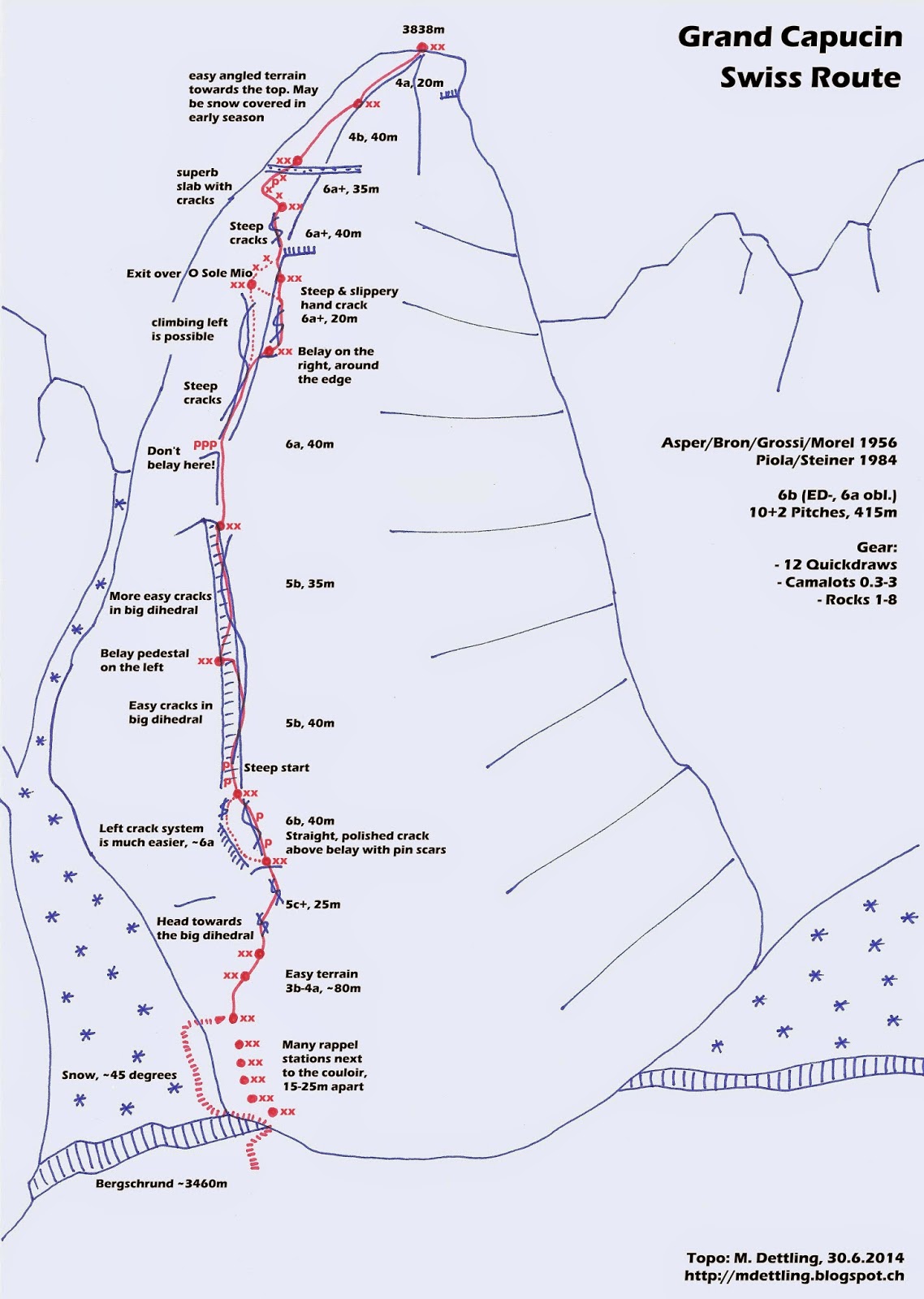
The impressive Grand Capucin. The Swiss Route tackles the left side. Source: camptocamp.org
Aiguille du Midi (Rebuffat Route 200m, TD+, 6A max. V+ obl.)
This historic route is arguably the most popular on the entire face and is now considered a crag above 3500m. The fourth pitch stands out as fantastic, and there are numerous escape routes in the upper section.
Description:
- Pitch 1 (5c, 30m): Start your climb by stepping left from the ledge and navigate the corner with minimal difficulty. As you reach the top, make your way left, performing a series of delicate moves across the slab beneath the overhang. A bolt secures this section, and you'll find a double-bolt belay point situated 2 meters before the end of the overhang. Continue for an additional 5 meters beyond the overhang to reach another bolted belay, offering a significantly better view of the crux pitch.
- Pitch 2 (6a, 25m): This is known as the 'S' crack, a section that's renowned in Chamonix for its distinctive character. Climb the slender finger-crack directly above the belay. It provides numerous footholds and multiple pegs for protection. The crack extends upwards before curving leftward, steadily increasing the level of exposure. This portion promptly leads to a small ledge with a bolted belay.
- Pitch 3 (5c, 20m): Ascend the corner-crack to the right, reaching the top of a block. Next, follow a diagonal path to the left through a sequence of steep flakes, descending slightly to an exposed belay. This pitch offers a brilliant climbing experience.
- Pitch 4 (5b, 20m): Follow the same flake system, continuing to the left to arrive at a steep, slabby corner. Ascend this corner with the help of a useful crack until you reach a large ledge.
- Pitch 5 (5c, 30m): Step to the right off the ledge, proceeding up the ramp while encountering some challenging moves. As you reach the top of the ramp, traverse the slab to the left and climb the crack system above, leading to another substantial ledge.
- Pitch 6 (5b, 30m): You have the option to climb directly up the steep wall above the ledge, graded at 5c. Alternatively, take an easier route by traversing right across blocky terrain, then returning left using solid handholds to navigate the steep section.
- Pitch 7 (5b, 30m): Traverse across ledges for approximately 10 meters, avoiding a premature ascent. This part takes you past the ridge used in pitch 6 of La Dame du Lac. Then, confront the wide chimney, which may have snow or be damp from snowmelt. Ascend the chimney to the right until it terminates. At this point, step to the right to establish a belay.
- Pitch 8 (4a, 10m): This pitch serves as a link, involving a descent as you step left and traverse ledges until you're beneath the deep-cut gully.
- Pitch 9 (5b, 30m): Follow the right side of the gully, navigating through enjoyable yet occasionally exposed blocky terrain until you reach a ledge system beneath the imposing final tower. You can take the central route up the gully, but be aware that it's often snowy and scattered with loose blocks.
- Pitch 10 (5c/A0 or 6b+, 25m): Ascend to the base of the final tower, following its right arête in a striking position until it begins to curve leftward, becoming slabby. Mantle onto the slab at this point, proceeding to follow it to the summit. This pitch is rarely climbed free and often relies on the bolts lining the arête. You can opt to bypass this section by traversing left around the final tower. Whether climbing it free or utilizing 'French freeing' techniques, the final slab leading to the summit is undeniably one of the best-situated pitches in this chapter, if not in the entire guidebook. It's an experience not to be missed.
Access: The adventure begins by taking the Aiguille du Midi cable car, followed by a brief descent on foot. Alternatively, if coming from Punta Helbronner, cross the Vallée Blanche to access the route.
Descent: To descend, rappel more or less along the same path you ascended. Numerous belay points are available, so choose the most secure ones for your descent. You can also
Gear: Ensure you're equipped with a full set of nuts and friends up to size 2 to tackle this fantastic climb.
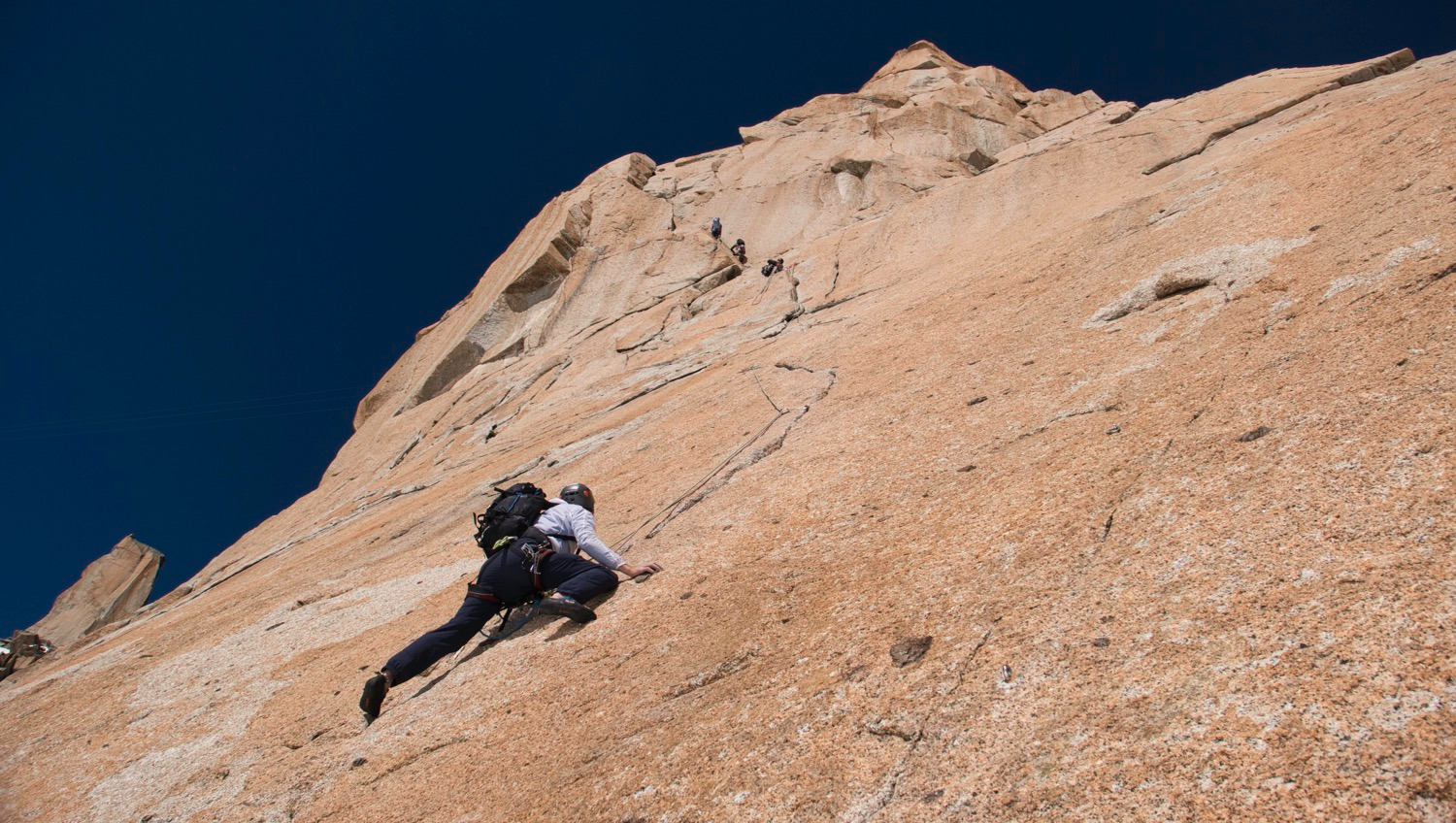
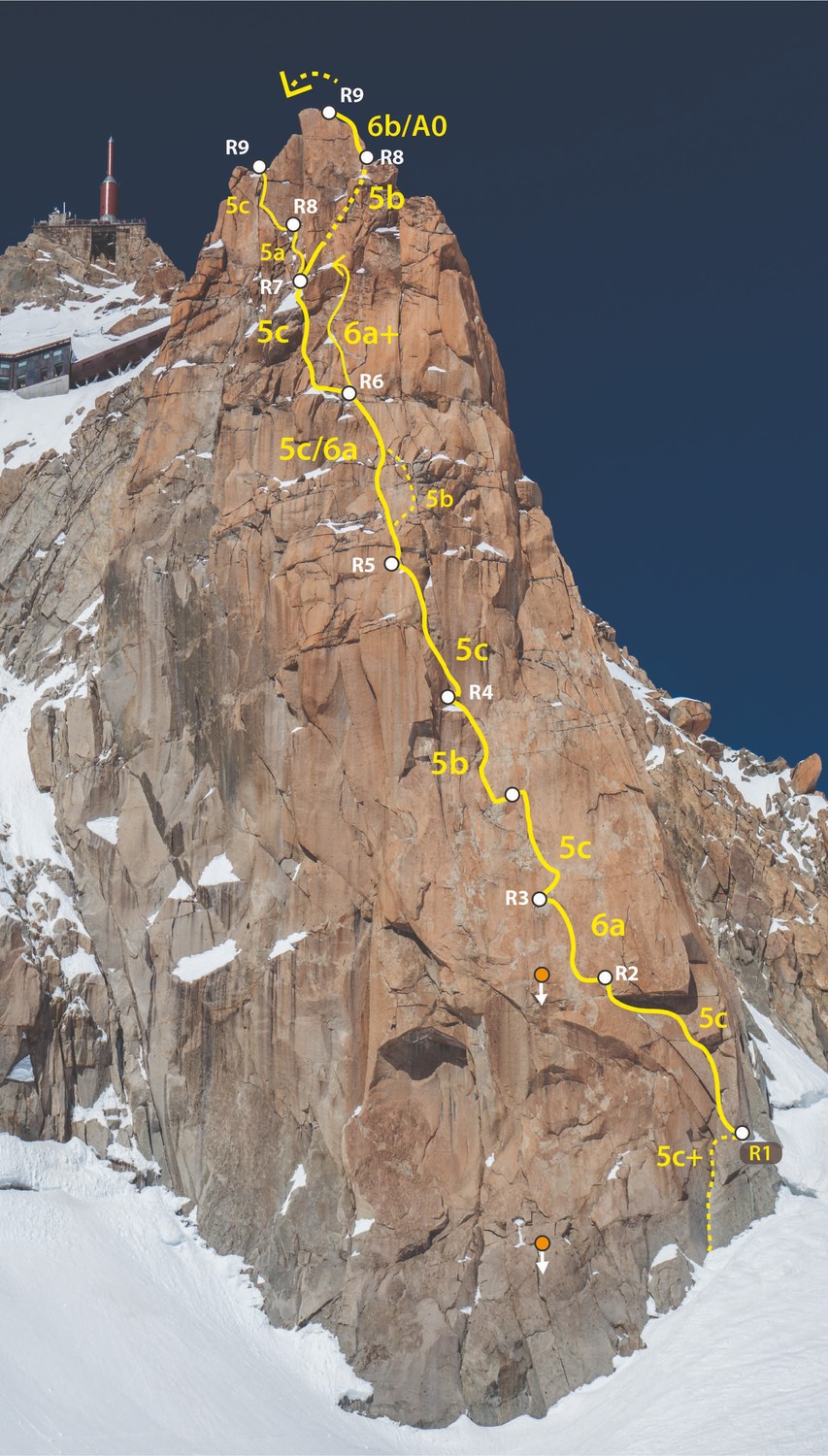 Rebuffat Route. Source camptocamp.org
Rebuffat Route. Source camptocamp.org
Aiguille Verte 4,122m (The Whymper Couloir)
Aiguille Verte, proudly standing at 4,122 meters in altitude, commands a revered presence in the Mont Blanc range, celebrated for its natural beauty and rich mountaineering history. The view from its summit is a reward cherished by climbers, but reaching this pinnacle is no small feat. The routes leading to the top are lengthy and demand a solid grasp of technical skills.
Our chosen path is the Whymper Couloir, an elegant and unmistakable line etched on the mountain's southeastern face. First ventured by Christian Almer, Franz Biner, and Edward Whymper in 1865, this route has since earned the status of a Chamonix classic, a must-conquer for every mountaineer.
Though not exceedingly technical, this climb offers a sustained challenge with slopes varying between 45 to 55 degrees. With its southeast orientation, much of the ascent occurs under the starry night sky. Your reward arrives at the summit, where the enchanting sunrise paints the landscape with its magical hues.
This two-day adventure begins with an approach to the Couvercle Hut on the first day, while the second day is dedicated to the ascent of Aiguille Verte, concluding your mountaineering journey with unforgettable experiences.
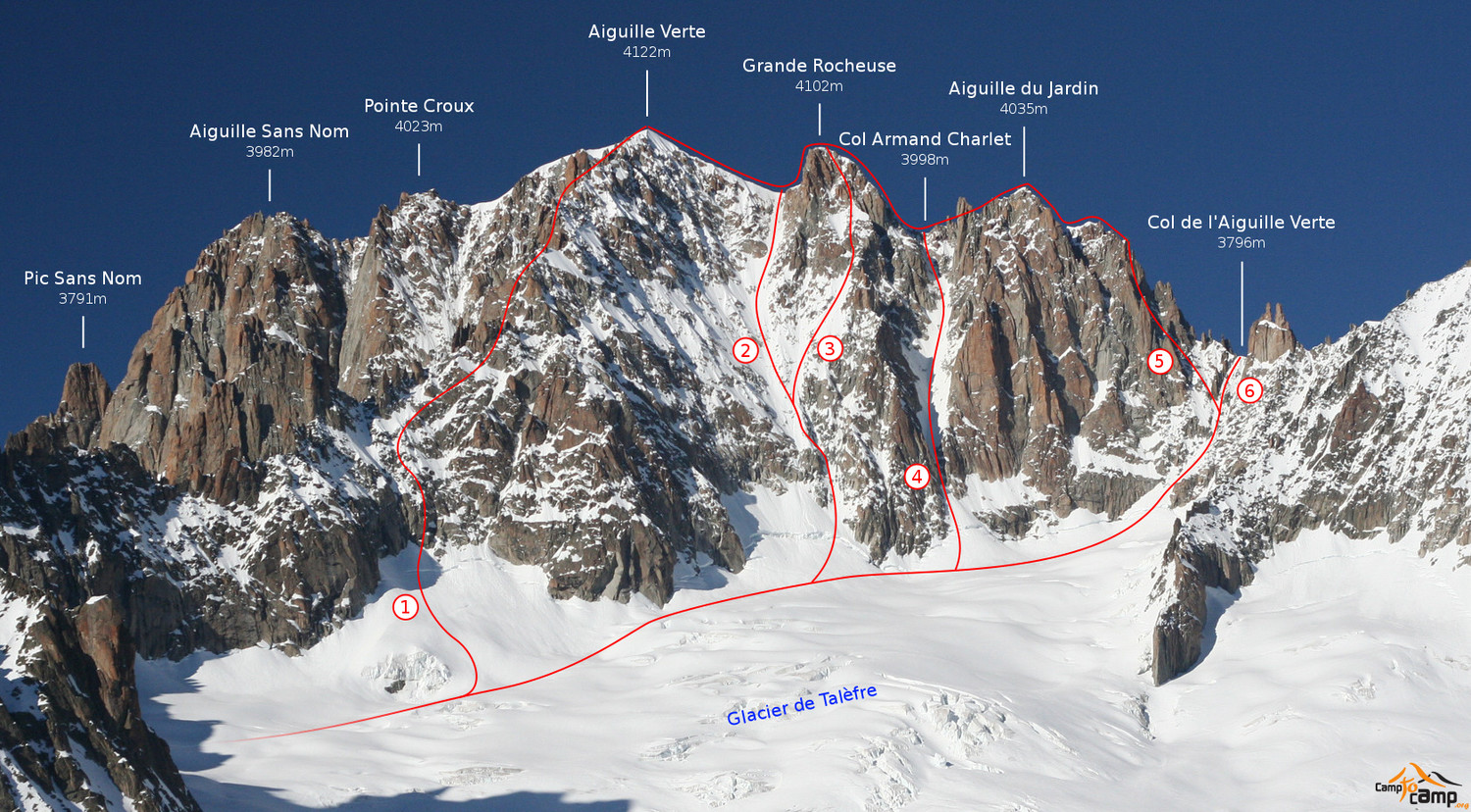
The Whymper Couloir is nº 2. Source camptocamp.org
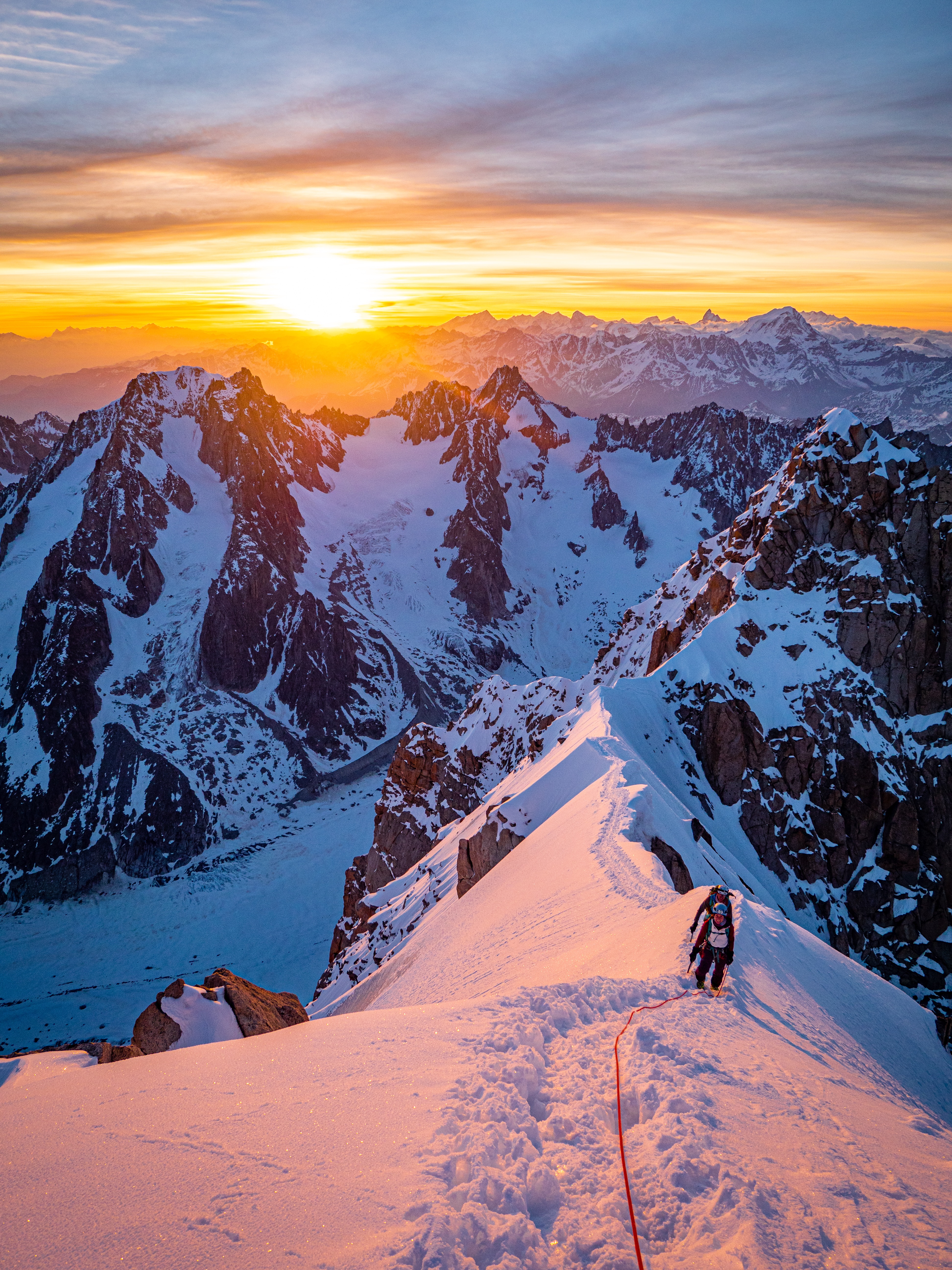 About to summit Aiguile Verte
About to summit Aiguile Verte
Aiguille du Midi (Cosmiques Arête II, AD, 4a.)
The Cosmiques Arête, nestled in the heart of the Mont Blanc massif, is a revered classic for good reason. This captivating ridge offers a mix of granite grandeur, exhilarating exposure, breathtaking vistas, and a blend of intermediate climbing challenges, spiced with moments of excitement. Conveniently located just a stone's throw away from the Aiguille du Midi cable car, this route beckons to climbers.
A brief journey of under half an hour from disembarking the cable car leads you to the starting point of the route. It commences with a straightforward blend of snow and rock, quickly capturing your interest as it guides you across snowy crests, through exposed abseils, and transitions to rappelling, culminating at the grand gendarme. The ascent continues, taking you past other impressive granite gendarmes and snowy ridges, climaxing with the most technically demanding section: a steep wall, complete with a diagonal crack featuring some artificial holes for crampons. Beyond this point, you'll traverse a delightful mix of snow and rock. As you approach the final snowy ridge, be prepared for a moment in the spotlight - tourists from around the globe await on the rooftop terrace, eager to capture images of you, the mountain's heroes. Ascend the precarious staircase leading to the terrace and savor your well-deserved 15 minutes of fame, as Andy Warhol famously said.
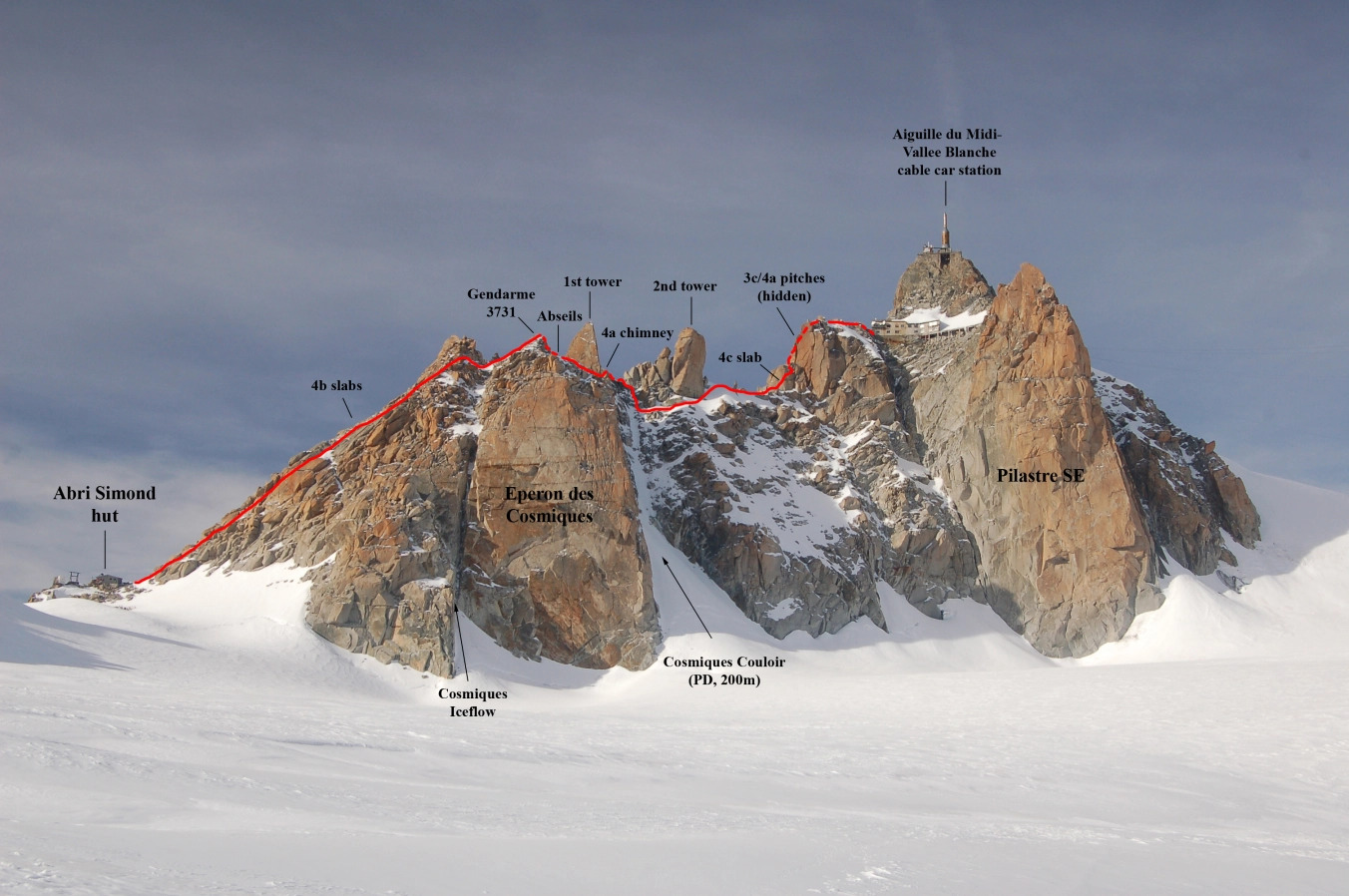
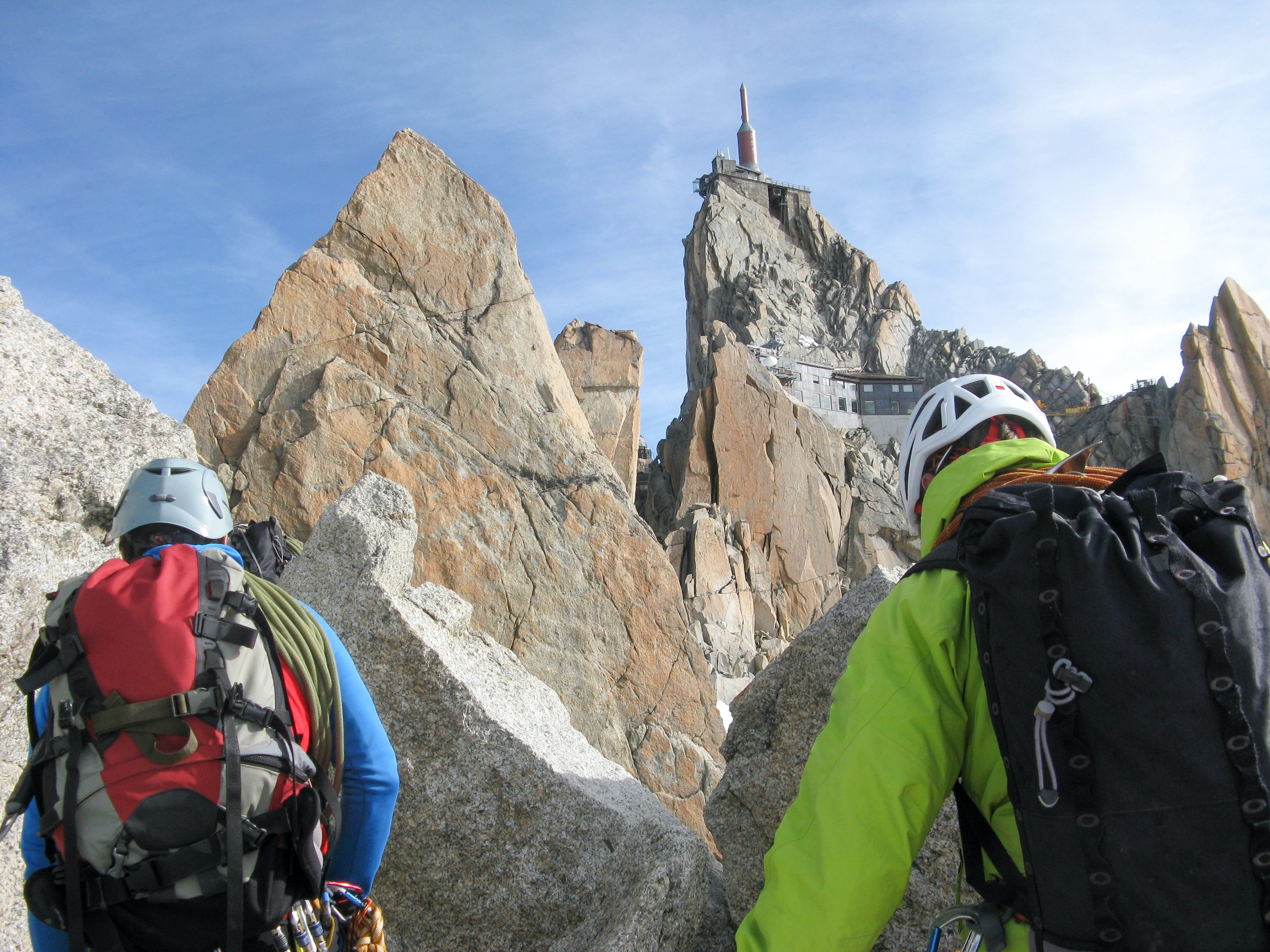
An epic journey on Arête des Cosmiques and the Aiguille du Midi in the background
Getting There:
Commence your journey by reaching Chamonix, then board the Aiguille du Midi cable car.
Access:
From the Aiguille du Midi cable car, descend along the ridge to Col du Midi, continuing until you reach the base of the spur extending to the Cosmiques Hut's terrace.
Itinerary:
Embark on your ascent from the Aiguille du Midi cable car, descending the ridge to Col du Midi, where you'll find the Abri Simond bivouac, not far from the Cosmiques Refuge, marking the route's starting point. Climb to the right of the ridge, encountering a mix of rock and snowy slopes. As you progress, the slope steepens, leading to a few 4b segments. Continue rightward until you arrive at the first gendarme. Traverse along the snowy ridge to the second point and initiate a descent, which is exposed but equipped for abseiling with anchors, spanning two sections. Proceed along the broad ridge to its end, where you'll discover a rock with a chain and bolt. Descend through abseiling, covering a distance of 20 meters or more, depending on conditions, leading to the steep gully. From there, traverse around the base of the initial large tower and ascend a chimney (graded at 4a) to reach a well-equipped ledge on the right, featuring a peg. Continue along the ridge above Cosmiques Couloir, veering right around the second tower, and follow the snowy ridge to reach spacious terraces nestled beneath the rocks. Ascend the fractured slabs for a short distance, rated at 4c, with artificial holes for crampons, then traverse rightward along the cornice. Navigate the narrow rock and snow gully, concluding at a strategically positioned terrace on the left, furnished with slings and pegs for belaying. Cross this terrace onto the NW face, ascending a chimney gully. Ascend the weathered face adorned with cracks, covering two pitches rated at 3c and 4a. Finally, reach the final snowy shoulder and ascend the metal staircase leading to the panoramic terrace.
Notes:
This route guarantees a sublime ridge adventure, cementing its status as a true classic. It enjoys high popularity and is typically in good condition from June to September. Opting to stay at the Refuge des Cosmiques offers an advantage, enabling an early start on the ridge and reducing the impact of daytime congestion, often caused by climbers, including beginners, which can slow down progress. The climb's average duration for a typical climbing duo falls within the range of approximately 2.5 to 3 hours, but under more challenging conditions, it can extend to nearly seven hours.
Remember, if you want to climb any of these classics and you need a guide, just give us a shout and we'll take you there with one of our Certified UIAGM/IFMGA guides.
Contact us for more info and details!


